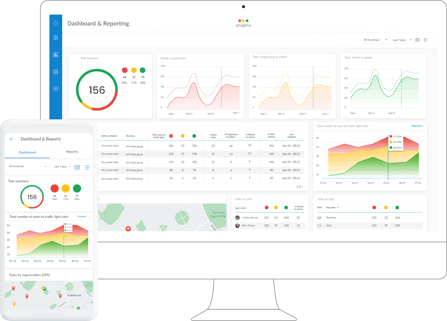 Offering feedback is one of the most challenging things to do in the workplace. While its benefits are profitable, there is no denying how damaging it can be for both employees and managers. This is because there are many ways for it to go downhill.
Offering feedback is one of the most challenging things to do in the workplace. While its benefits are profitable, there is no denying how damaging it can be for both employees and managers. This is because there are many ways for it to go downhill.
Giving feedback has a reverberating effect on individuals, teams, managers, and the company itself. Thus, it needs careful dispensation to get the desired result.
Feedback should go both ways. As a manager, you must know how your decisions and actions affect your employees. Similarly, your employees must also understand how their actions affect the company.
This article will discuss how to give and receive honest feedback in the workplace as a manager or owner. We will also discuss how management tools like Snapfix can aid you with providing honest feedback on both sides.
Why is Honest Feedback Important?
Honest Feedback is helpful information or criticism of an individual’s actions or behavior. It is intended to initiate change or improvement in the individual.
There are two types of feedback - positive and negative. Either way, it is important that it is both constructive and honest, especially in the workplace.
Many companies and individuals are terrified of feedback, and many avoid it. However, simple reasoning and research reveal it is one of the most effective ways to improve. If you know what’s wrong or right, you can fix or improve it.
Below are some of the benefits associated with honest feedback in a professional setting.
- - Employees Valuation
Constructive feedback shows employees that you, as a manager, value their work and contribution. If done correctly, it can result in an increased sense of loyalty in employees. It also proves your dedication to making improvements for their benefit, not just the company.
- - Motivation
Well-laid feedback can assure an employee that their efforts are appreciated even if it is negative. This can motivate them to continue working harder or, at the very least, push them toward improving.
- - Personal Development
The purpose of feedback is to help identify what is working and what needs improvement. This enables managers and employees to enact a focused approach that is beneficial to both the company and themselves.
- - Creates Leaders
A company that is open to receiving feedback as much as they give it ensures that employees are active in decision-making. Not only does this improve the relationship between managers and their teams, but it also breeds leaders within the organization.
- - Project Risk Reduction and Safety
Honest feedback helps identify toxic cultures detrimental to the workplace’s atmosphere. As a form of communication, it provides an avenue for conflict resolution. This can save the company’s projects and reduce risks to the mental and physical health of employees. This is because management and employees become able to course-correct their actions.
How to Give Honest Feedback as a Manager
Most managers dislike giving feedback. Many consider it one of the most challenging parts of their job despite many research projects confirming its importance.
In a study conducted by Harvard Business Review, 44 percent of managers agree that it is difficult to give feedback. Twenty-one percent admit to giving negative feedback, but an alarming 37 percent admitted to not giving positive feedback.
As a manager, knowing how to deliver honest feedback is essential in retaining a positive workplace atmosphere while also improving the productivity of employees. It is important to know how employees receive feedback, as what works for one employee might not work for another. When this happens, avoid the blame game at all costs.

Using the Situation, Behavior, and Impact model can help you remain objective of employees’ actions. The process involves;
- - Situation
This refers not only to the specific issue that needs addressing but also to the time and place to hold this conversation. The situation is vital as both manager and employee need to understand the context of the conversation outside prying ears.
Outlining the situation requires specificity of the action. Thus, avoiding events that happened weeks or months ago is key. Both manager and employee should have a vivid memory of the situation.
- - Behavior
There must be specific behavior that needs addressing. When discussing the situation, share only facts that you have observed. This prevents the employee from thinking you are picking a side or finding them untrustworthy.
While addressing this, try not to make assumptions or inject biases of your own. Only use definite examples and avoid accusatory statements.
- - Impact
If you want to see the desired change, helping the employee understand the impact of their actions is the next step. It allows the employee to know why it matters.
At the same time, allowing them to share their perspective on the situation can provide new information not previously considered. You may not know how valuable this information is to resolve the situation until you have it.
- - What’s next?
Defining the way forward ensures you and the employee arrive at a resolution. The tone is critical as the employee needs to know that finding a resolution is a collaborative effort.
Regular check-ins are required to provide accountability between you and the employee. It also enables you, as a manager, to track the progress or regression of the employee.
One key factor in all this is empathy. This requires practice but improves the willingness of employees to talk.
How to Receive Feedback as a Manager
Like employees, managers also need feedback. But this is extremely difficult because of the palpable risk employees face. Being on the other end of a power dynamic means employees have more to lose.
Asking for feedback from employees won’t make them give it. There is always the feeling that it is a scheme to weed them out. As a result, managers need to know how to get employees to ease up without fear.

Here are some ways to make that happen in the workplace.
- - Open-Door Policy
While it takes time for employees to believe the sincerity of it, this makes you approachable. An open-door policy makes employees feel at ease bringing their ideas, comments, complaints, and suggestions to you. This feedback must be not only listened to but also implemented if you are to earn trust.
- - Frequent Performance Review
Frequent performance review creates an opportunity for employee and employer to have open and honest feedback. The goal is to create a safe space where employees can express their issues without reproach
- - Find Out What They Need
Never ask employees how you are doing. Instead, ask them how you can help them. The former makes you appear self-serving, while the latter bases the conversation on them. Their response is how you are doing.
- - Don’t be Defensive
When an employee’s feedback comes off as unexpected or harsh, listen. Don’t try to rationalize it or get them to see your perspective. This is their perspective; accept it.
Giving Honest Feedback with Snapfix
Computerized Maintenance Management System tools (CMMS) have proven their effectiveness in allowing management personnel to analyze recurring incidents or defects and enable them to start corrective actions and change in the process. With certain CMMS tools, you can do much more.
 Snapfix is the simplest facilities and management platform in the world. Its simplicity is one of its greatest strengths, but more so are the capabilities it offers.
Snapfix is the simplest facilities and management platform in the world. Its simplicity is one of its greatest strengths, but more so are the capabilities it offers.
The obvious ones include:
- - Process and operations optimization
- - Project organization
- - Work order management
- - Seamless integration
As a manager, you are in charge of many employees. More often than not, the sheer size may result in finding out about situations late. Usually, when things have gone wrong.
Knowing how to give constructive feedback and receive it is essential. But more so, as a manager, you should acknowledge the things that have gone right. Snapfix provides you with the tools to make that happen.
Snapfix comes fitted with its own instant messaging. This allows you the possibility of leaving frequent and precise shoutouts to individual employees or teams. Acknowledging the challenges faced and the solutions created provides encouragement and a sense of value among employees.
The Completed Tasks by User Report and Time Report in Snapfix allow management to keep track of workload and also provide insights into employee productivity. If an employee is experiencing difficulties, management can then address these through a one-on-one conversation behind prying ears.
To learn more about how Snapfix can increase team productivity, book your free trial here today.



